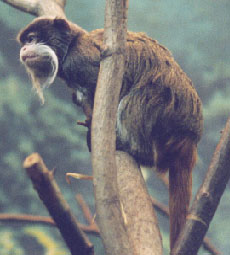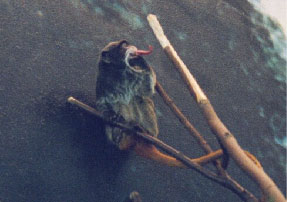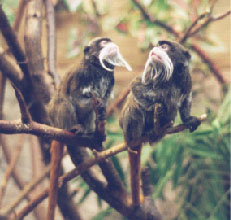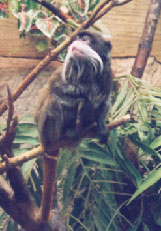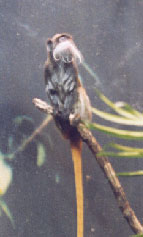REFERENCES:
Burton, Frances. 1995. The Multimedia Guide to the Non-human Primates. Prentice-Hall Canada Inc.
Epple, G., Belcher, A.M., Kuderling, I., Zeller, U., Scolnick, L., Greenfield, K.L., Smith III, A.B. 1993. Making Sense Out of Scents: Species Differences in Scent Glands, Scent-marking Behaviour, and Scent-mark Composition in the Callitrichdae. in Marmosets and Tamarins: Systematics, Behaviour, and Ecology. ed. Anthony B. Rylands, Oxford University Press.
Fleagle, John G. 1988. Primate Adaptation and Evolution. Academic Press.
Garber, P.A. 1993. Feeding, Ecology, and Behaviour of the Genus Saguinus. in Marmosets and Tamarins: Systematics, Behaviour, and Ecology. ed Anthony B. Rylands. Oxford University Press.
Kinzey, W.G. 1997. Saguinus. in New World Primates: Ecology, Evolution, and Behavior. ed. Warren G. Kinzey, Aldine de Gruyter, New York.
Kinzey, W.G. and Cunningham, E.P. 1994. Variability in Platyrrhine Social Organization. American Journal of Primatology. Vol. 34, 185-198.
Snowdon, C.T. and Soini, P. 1988. The Tamarins, Genus Saguinus. in Ecology and Behavior of Neotropical Primates, Vol. 2 PP. 223-298. Eds, R.A. Mittermeier, A.B. Rylands, A.F. Coimbra-Filho, and G.A.B. da Fonseca. Washington, DC: World Wildlife Fund.
Terborgh, J. 1983. Five New World Primates: A Study in Comparative Ecology. Princeton University Press. |
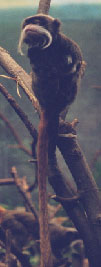 |
